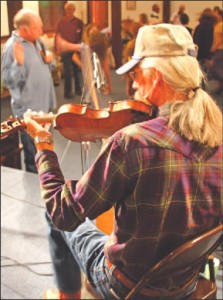by Barbara Kingsolver, Steven L. Hopp, and Camille Kingsolver
Illustrated by Richard A. Houser.
Harper Collins, 2007
ISBN: 0060852569
I found so much to appreciate in this book – a sprawling meditation on food, food politics, family, origns, and what we sometimes self-consciously refer to as The American Way of Life – that it is a bit of a challenge for me to know where to begin. So, let’s begin with: why this book? Why now? It came out in 2007, for heaven’s sake – two years ago being a sliver of eternity in America. 2007 – remember when?
When the engine of the American economy resembled the biblical juggernaut, rolling over orchards and farmland at a record rate and turning them into “house farms”? Corn and soybeans have more meaning as “futures” than as foodstuffs as far as our economy is reckoned (corn and soybeans, or at least their heavily industrialized farming and marketing, feature significantly in Kingsolver’s memoir/travelogue/polemic). Mortgages keep going up, up, up, as does the demand for more and more fossil fuels to keep the whole desperate whirligig of American capitalism spinning. Into this overheated environment comes Animal, Vegetable, Miracle, which, as Kingsolver, puts it, is “the story of a year in which we made every attempt to feed ourselves animals and vegetables whose provenance we really knew.”
How ironic (as Kingsolver herself points out) that in only two generations since the end of World War II, we have shaken the dust (or dirt) of the agrarian society we once were so thoroughly off our collective heels that when first encountered, the thought of a family’s attempt to live for a year on the (quite literal) fruits of their own labors struck me as almost quaint – or quixotic. And I enjoy the advantage of living in a rural area, still surrounded by farm land. I eat local eggs, shop at local farmer’s markets. I’ve grown food for myself. Even with all this, I found myself stricken with a vaguely defensive awe at the premise laid out in this book – kind of like a Christmas and Easter-churchgoer reacting to a friend’s move to a monastery. Won’t it be hard to adjust to that lifestyle? Won’t you miss the illicit pleasures of the flesh, like raspberries in winter? More to the point, is this book going to be some kind of foodie fundamentalist tract that makes me feel guilty about my lack of commitment to locavorism?
Not to worry, dear readers. While the Kingsolver family (husband Steven and daughter Camille are contributors, though the main voice remains Barbara’s) do lob some heavy critical shells at the American way of eating, their chronicle is leavened with wit, humor, and wonderful stories and characters. Some of the most memorable characters are the animal and vegetable miracles alluded to in the title – the chickens who become known as “Lily’s Lovely Layers,” the lovesick turkey hen, the huge squash Kingsolver acquires during their trip to Italy. This acquisition is described in the chapter, “Where Fish Wear Crowns,” and if you don’t instantly long to drink and eat your way through that lovingly-described land when you are done with that chapter, then I despair of you.
Most of the action, though, takes place on the Appalachian farm whither Kingsolver and her family migrate from their home in Tucson, and concerns the joys and travails of becoming intimately re-acquainted with the once typical, now somewhat exotic-seeming rituals of rural life: asparagus and mushroom-hunting in the early spring, tomato harvest in high summer, slaughter in the fall, feasting on humble root vegetables in the winter. Kingsolver’s prose, a fetching combination of lyrical and deadpan, righteous and self-deprecating, pulls us through the year with the insinuating grace of poetry. Consider this example, pertinently pulled from the chapter, “Springing Forward”:
Then began the lover’s game we play with that irresistible rascal partner, March weather. He lulls us into trust one day with smiles and and sunshine and and daytime highs in the sixties, only to smack us down that night with a hard freeze…This is what’s cruel about springtime: no matter how it treats you, you can’t stop loving it. If the calendar says it’s the first day of spring, it is.
So, why this book, why now? Because two years after its publication, its themes – getting back, if not to the land, at least to an acquaintance with it, knowing your food sources, and living both sustainably and well – seem even more critical now than they did then. Local eating, in the wake of salmonella scares and tales of drought in California, may well become perceived as the biggest national security issue of all. Read this book as a wake-up call, as inspiration, as a love ballad to good food grown in your own backyard – or your neighbor’s. Grow a tomato in a pot, spend that few extra bucks on grass-fed beef. Now if you’ll excuse me, I have to go collect some soil samples and chide the apricot blossoms back into retreat. That rascal March weather has sweet-talked them into coming out waaay too early…
Elliot Jackson, rock and roll librarian, splits her time between Paonia and Salida and always prefers to eat local foods.


